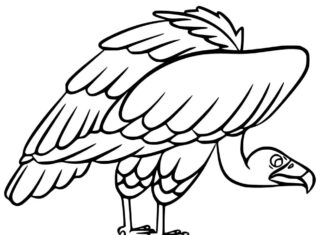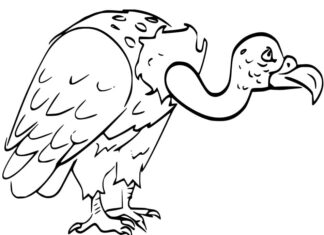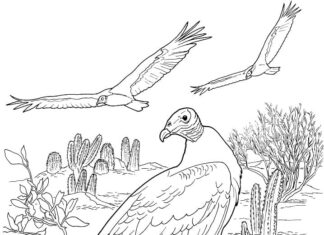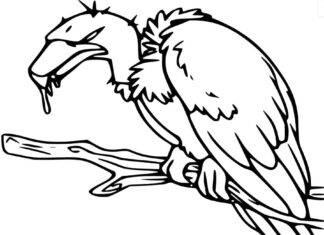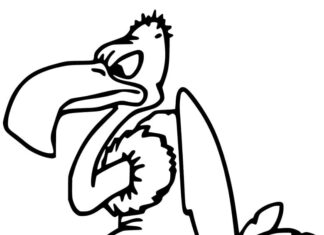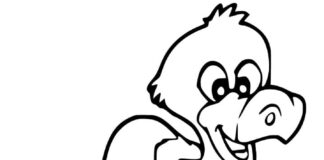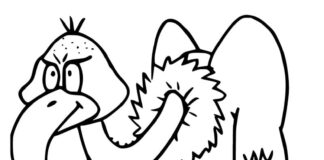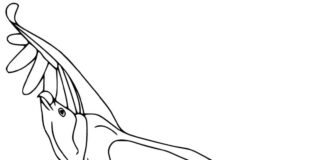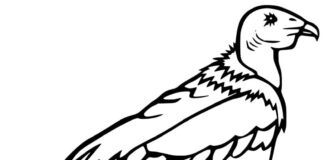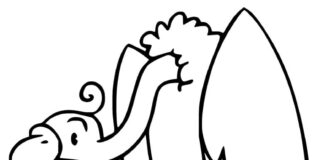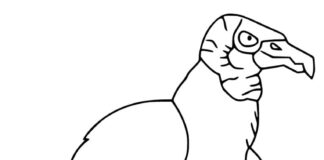Vultures are birds of prey belonging to the corvid (Corvidae) or condor (Cathartidae) family. Vultures are commonly associated with necrophagic activities, that is, eating carrion, which plays an important role in the ecosystem.
Vulture Coloring Book
information
- Geographic distribution: Vultures are found on various continents, including North America, South America, Europe, Africa, Asia and Australia. Their occurrence depends on the species.
- Types of vultures: Depending on the region in which they are found, vultures are divided into different species. For example, North America is home to black vultures and California vultures, while Africa is home to white-headed vultures, among others.
- Body structure: Vultures have distinctive features, such as bare heads and necks, which is an adaptation for eating carrion to avoid getting their feathers dirty. Their warning appearance can help deter other predators from carrion.
- Food: Vultures are necrophagous activities, which means they feed on carrion. Their presence is important for maintaining the ecosystem, as they help to quickly remove dead animals and prevent the spread of disease.
- Ecological Significance: Vultures play an important role in the ecosystem, especially as "cleaners" of the areas where they live. Through their eating of carrion, they reduce potential sources of disease and enter into complex relationships with other animals.
- Threats: Some vulture species are threatened with extinction, mainly due to habitat loss and exposure to human activities. In some areas, vultures are also sometimes killed for cultural reasons or traditional medicine.
- Vulture Diving: Some vulture species, such as California vultures, are capable of diving flights, in which they dive toward the ground from a high altitude to gain speed and avoid the risk of attacks from other predators.
- Vulture Conservation: In some areas, efforts are being made to protect vultures, especially those that are endangered. Reintroduction programs and education are often used to raise awareness about the importance of these birds to the ecosystem.
- Mythology and Culture: In some cultures, vultures are sometimes considered magical beings, and their presence can be interpreted as a sign heralding change or future events.
trivia
- Flight speed: Vultures can reach impressive speeds in flight. Some species, such as the Himalayan vulture, can reach flight speeds of up to 130 km/h.
- Sight: Vultures have excellent eyesight, which is essential for locating carrion from a distance. Their eyes are adapted to see in both daylight and low light.
- Focusing on fragrance: Although sight is important for vultures, they also have a well-developed sense of smell, which helps them detect carrion even when it is hidden or difficult to access.
- Changes in species: Some vulture species are threatened with extinction, and in some cases their populations are declining dramatically. However, some species, such as the Turkey Vulture, are seeing population growth thanks to conservation efforts.
- Role in environmental cleanup: One of the key functions of vultures in the ecosystem is to clean the environment of carrion. They help prevent the spread of disease by quickly removing dead animals.
- Cultural significance: In some cultures, vultures were seen as creatures of death and associated with impending change. However, in other cultures, such as ancient Egypt, they were considered symbolic and had positive meanings.
- Breeding and education: In some areas, vultures are being subjected to breeding and education programs to raise awareness of their role in the ecosystem and encourage conservation of these birds.
- Food and competition: In areas where access to carrion is limited, vultures compete with other predators, such as foxes and wild boars, for access to food.
- Flight Cooperation: Vultures often fly in groups, which is known as a vulture group. This habit enables them to effectively detect carrion sources and compete with other animals.
- The influence of popular culture: Vultures also appear in popular culture, in literature, films and other media. Their distinctive appearance and behavior are sometimes used to create a mood of mystery or horror.

